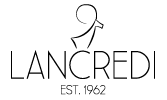The Ultimate Guide to Forex Trading Platforms
In today’s fast-paced financial market, choosing the right forex trading platform Forex Brokers in Indonesia trading platform is essential for success. The rise of globalization has led to an increasing number of retail traders participating in the foreign exchange market, which has made the demand for effective trading platforms more critical than ever before. Traders, both novice and seasoned, rely on these platforms to execute trades efficiently and to access valuable market information. In this guide, we will delve deep into what to look for in a forex trading platform, the various features offered, and some of the most popular platforms available in today’s market.
What is a Forex Trading Platform?
A forex trading platform is a software application that allows traders to access the forex market, execute trades, manage their accounts, and analyze market trends. These platforms serve as a bridge between traders and the forex market, providing essential tools and resources for effective trading. The platforms come in various forms, ranging from desktop applications to web-based solutions and mobile apps.
Key Features of a Good Forex Trading Platform
When selecting a trading platform, several key features can significantly impact your trading experience. Here are some essential aspects to consider:
1. User-Friendly Interface
The platform’s interface should be intuitive and easy to navigate. A complicated platform can lead to errors and suboptimal trading strategies. Look for a clean design with clearly labeled tools and resource sections.
2. Security
Security is paramount when trading online. A reputable forex trading platform should employ high-level encryption protocols to protect user data and transactions. Additionally, ensure that the platform is regulated by a reputable financial authority.
3. Trading Tools and Features
Effective trading platforms come equipped with various tools, including charting tools, technical indicators, and analytical resources. Some platforms also offer automated trading features, which can help strategize trades based on predefined criteria.
4. Variety of Trading Instruments
While most platforms focus on forex, the ability to trade a variety of instruments like commodities, indices, and cryptocurrencies can enhance trading opportunities. Having access to diverse markets can also allow for better portfolio management.
5. Customer Support
High-quality customer support is essential for resolving issues and inquiries promptly. Look for platforms that provide multiple channels of communication, such as phone, email, and live chat support.
Types of Forex Trading Platforms
Forex trading platforms can be categorized into two main types: proprietary platforms and third-party platforms. Understanding the differences between these can help you make a more informed decision:
1. Proprietary Platforms
Many brokers develop their own proprietary trading platforms tailored to their specific services and clientele. These platforms often come packed with unique features and are designed to enhance the trading experience for their users. However, they may lack some of the more advanced analytical tools that third-party platforms offer.
2. Third-Party Platforms
Popular third-party trading platforms, such as MetaTrader 4 (MT4), MetaTrader 5 (MT5), and cTrader, are widely used in the forex community. These platforms are known for their robustness and comprehensive trading tools. They offer various analytical resources, support for algorithmic trading, and a customizable user experience.
Popular Forex Trading Platforms
Here are some of the most recognized trading platforms in the forex market:
1. MetaTrader 4 (MT4)
MetaTrader 4 is one of the most universally recognized trading platforms among forex traders. It offers a user-friendly interface, extensive charting features, and a range of technical indicators. MT4 also supports automated trading through Expert Advisors (EAs), allowing traders to implement strategies without manual intervention.
2. MetaTrader 5 (MT5)
A successor to MT4, MetaTrader 5 introduces more advanced features, including multi-asset trading capabilities, an even more extensive set of technical indicators, and enhanced order management tools. MT5 is suitable for traders looking to expand beyond forex to other asset classes.
3. cTrader
cTrader is gaining popularity due to its modern user interface and advanced charting capabilities. It provides an array of customizable trading tools and features, focusing on speed and efficiency. It’s favored by professional traders for its streamlined order execution and advanced algorithmic trading functions.
Choosing a Forex Trading Platform
When choosing a forex trading platform, it is vital to assess your trading style, needs, and preferences. Consider factors such as the level of support, available features, and the specific markets you wish to trade. Testing multiple platforms using their demo accounts can also provide valuable hands-on experience to determine which platform best suits your trading approach.
Conclusion
In conclusion, the right forex trading platform is a crucial aspect of achieving success in the forex market. By understanding the key features and types of platforms available, traders can make informed decisions that align with their trading strategies. Whether you’re just starting or looking to switch platforms, taking the time to evaluate your options can significantly improve your trading experience and outcomes.
